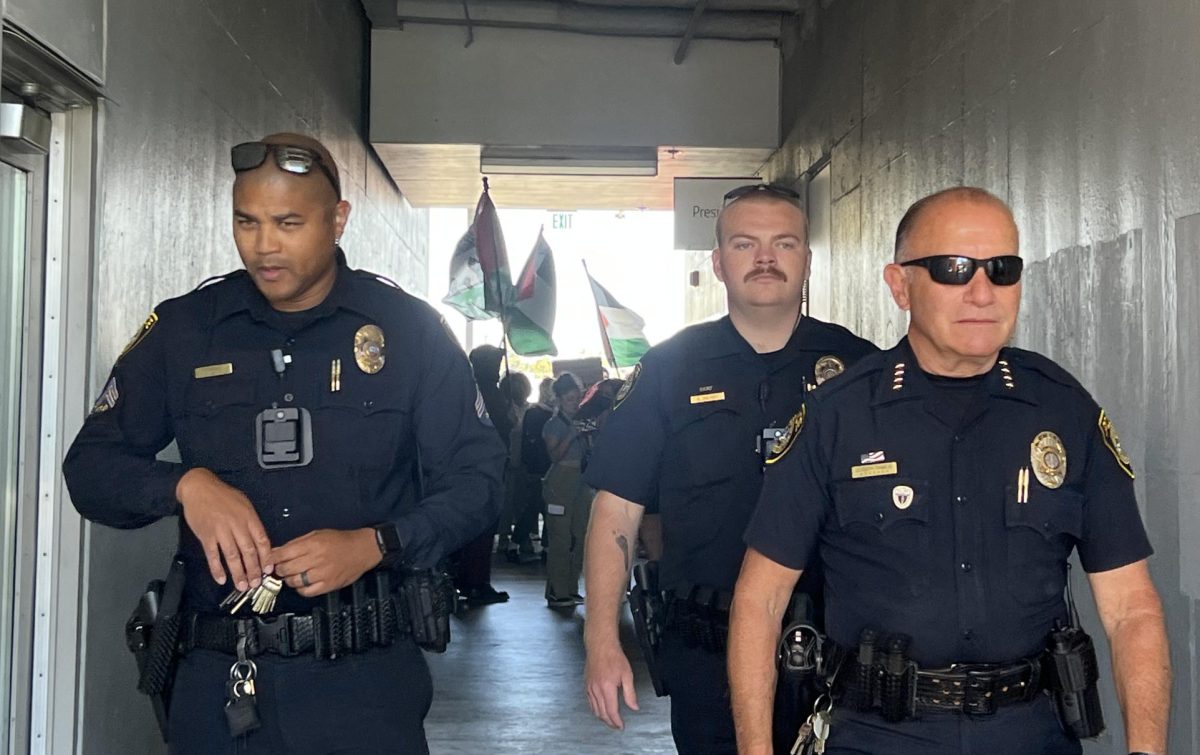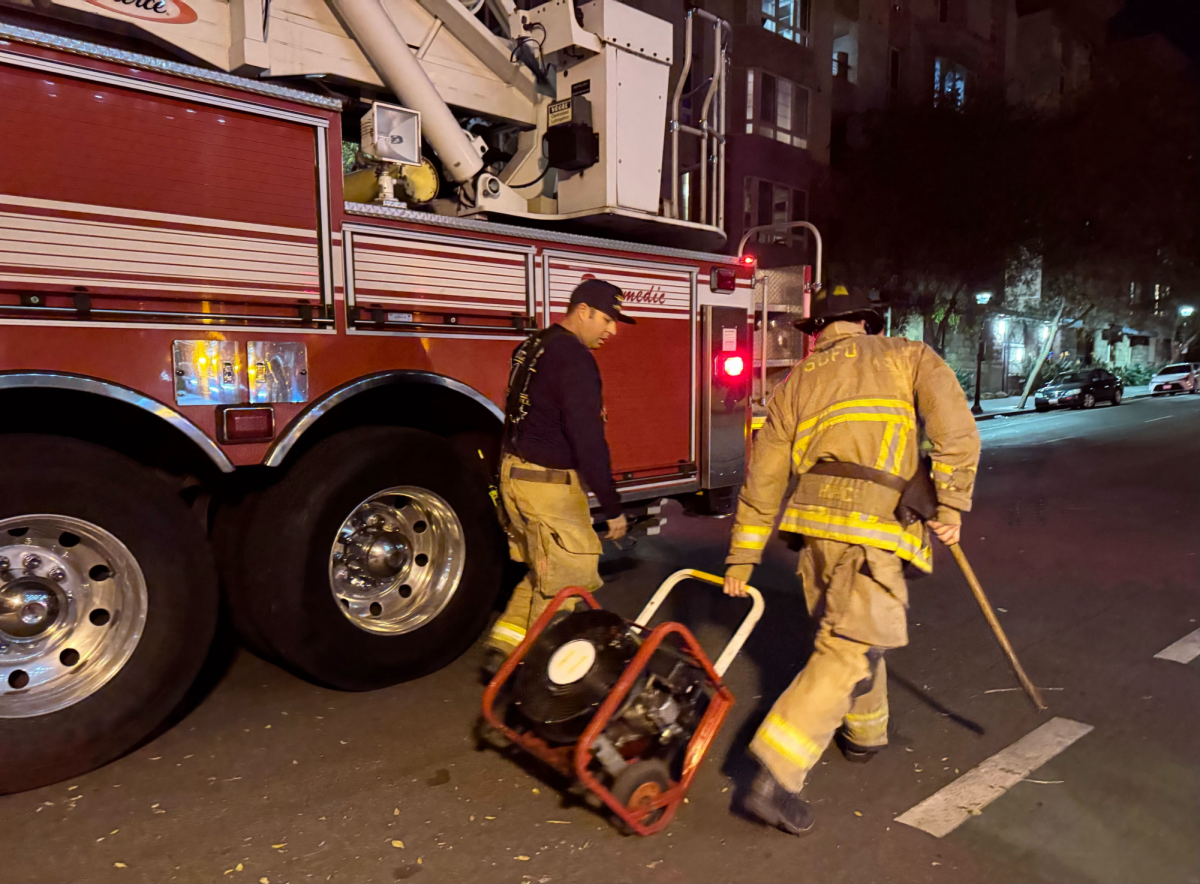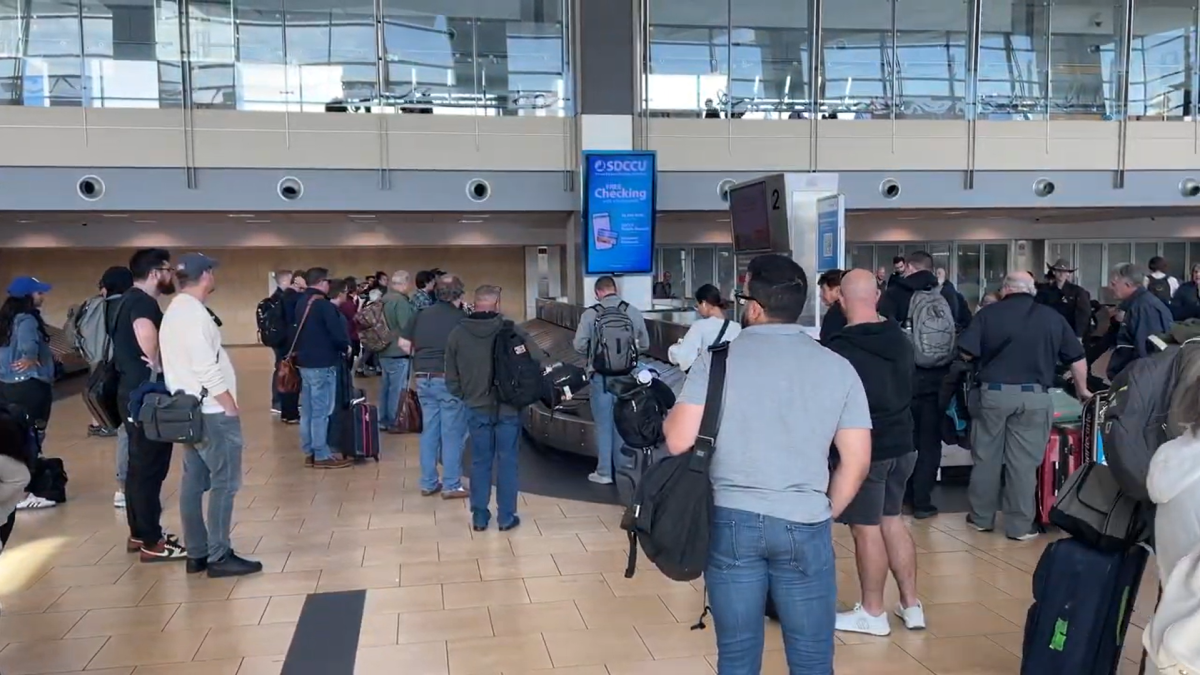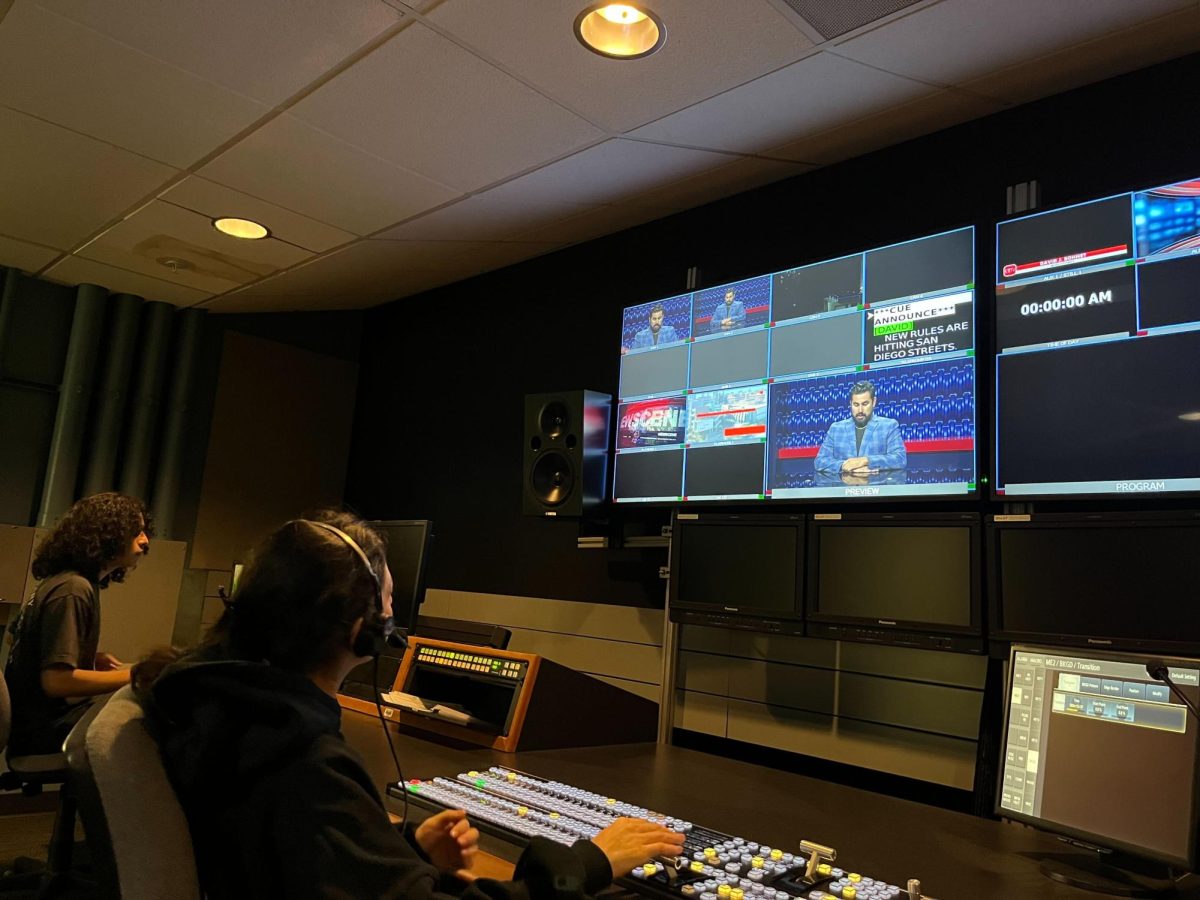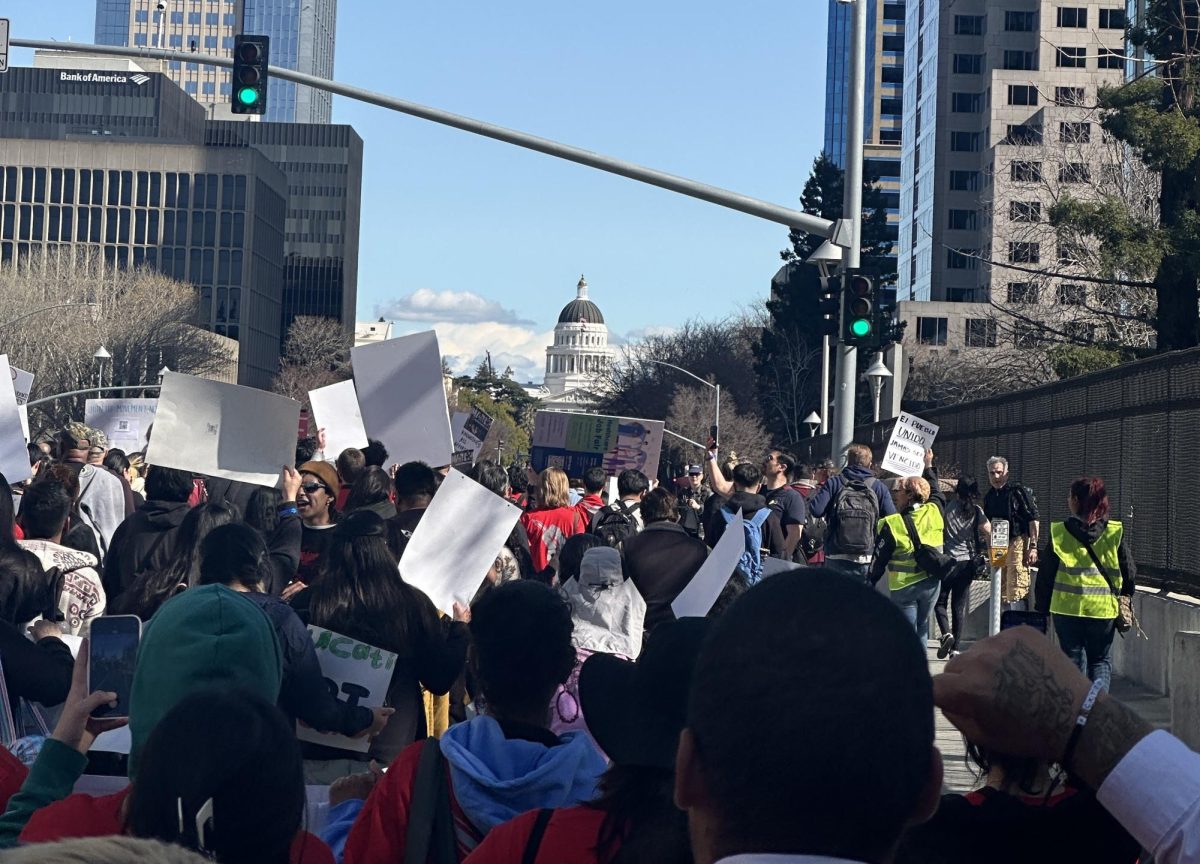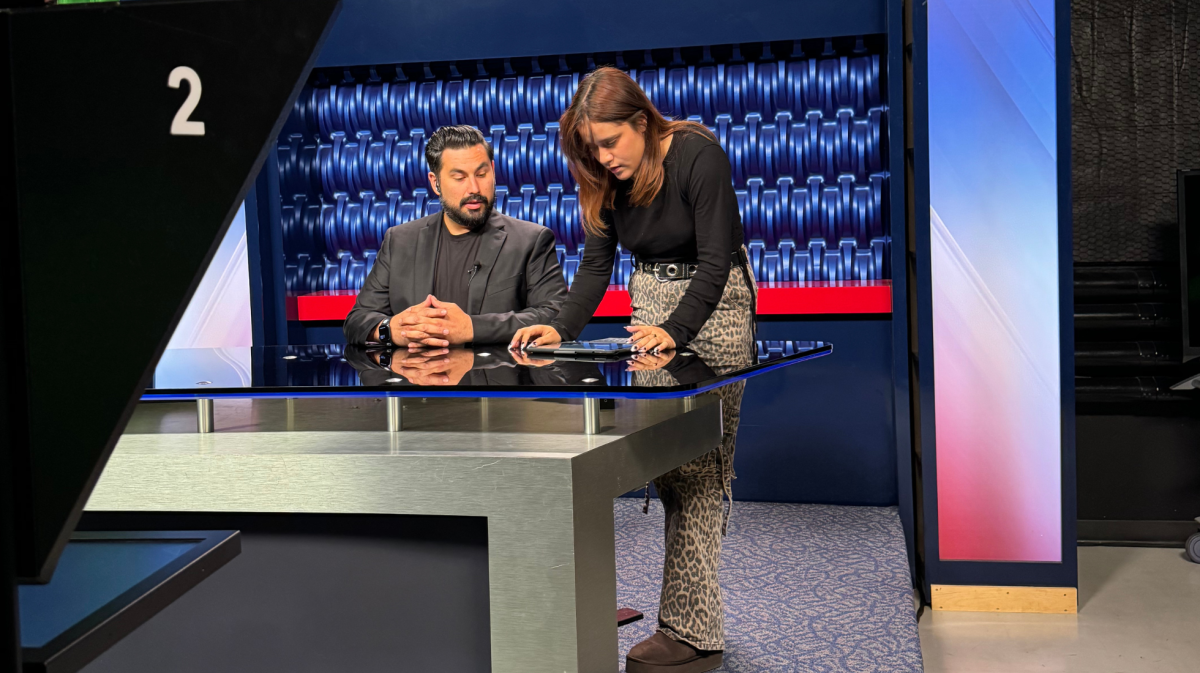Veterans gather in Gorton Quad to share the horrors of war as they honor fallen soldiers
War is not a game.
Several combat veterans delivered tha mesage at a special event at San Diego City College Nov. 10.
The Veteran’s Day event included Arlington West, a display of 252 cardboard tombstones that were set up around Gorton Quad to commemorate the soldiers who have been killed in the wars in Afghanistan and Iraq. The tombstones included the names of soldiers hailing from different areas in California including San Diego, Los Angeles, Orange and Imperial counties among others.
This was the second year that the event was held.
The event was put on by Maurice Martin, a veteran and the president of the San Diego City College chapter of Veterans for Peace.
Veterans for Peace is a non-profit organization made up of veterans from various wars who draw on their own experiences to help spread public awareness on the consequences of war.
A significant number of the student population at City is made up of veterans, according to Martin.
“Arlington West honors fallen veterans, those who are living and dead, and those whose sacrifice is still ongoing through homelessness, PTSD (Post-Traumatic Stress Disorder), depression and traumatic brain injury,” said Martin.
Speakers at the event included World War II, Vietnam, Korean, Iraq and Afghanistan wars veterans, Congressman Bob Filner and City College President Terrence Burgess.
The president of the San Diego branch of the Veterans for Peace, Barry Landendorf, was on hand to support Martin and help get wthe message out to young people in the community.
Landendorf, 69, is a Vietnam War veteran who served as an engineering officer in the U.S. Navy during 1965 to 1968.
“We tend to glorify war when war is not a game,” Landendorf said. “You can’t help but be affected by it. If you aren’t serving then you probably know someone who is serving. We are all about being peaceful. We don’t advocate violence at all. We try to put on activities every month to help remind people about what’s going on and remind them of the consequences of war. We also put on different outreach programs in the community, including homeless projects, to help veterans.”
The program also offers what they call a “youth alternative,” which involves visiting the same schools that military recruiters visit.
“The recruiters will come to a school with a van full of Army video games and we will show up and tell them that war is not a game. The military is not a travel agency,” Landendorf said.
Bryce Schierenbeck, a City College student who served seven years in the U.S. Army as part of the wars in Iraq and Afghanistan, spoke of his first-hand experience and stressed the importance of understanding the true definition of war.
“War isn’t what you think it is. Kids watch video games and think they know what it’s like. It’s not glorified like it is on TV. It’s bloody. It’s dirty. It’s filled with long, sleepless nights. It’s horrible,” Schierenbeck said.
Jan Runman, 64, was another Vietnam veteran showing his support. Runman began serving a 28-month-long service of duty in September 1966.
When he returned home he was met with indfference from his community and he quickly grew strong in his stance against war.
“I learned a lot from taking classes. There’s a lot of lying. The politicians lie. War is all about profits and money,” Runman said.
Runman also experienced one of the biggest problems soldiers face upon returning home: post-traumatic stress disorder.
“I spent two days on the battlefield and then I was back on a street in Los Angeles,” Runman said. “I experienced PTSD. I didn’t learn that I had it until I was 58. I thought what I was experiencing was normal. I thought it was happening to everyone.”
For many veterans, the sacrifice does not end once they are shipped back and it’s important to remember that the struggle goes on even when they are at home.
Martin was only a teenager when he left home to serve in a 26 -men unit in El Salvador. He echoes Runman’s sentiments about PTSD because he experienced it as well.
“PTSD is like being struck with lightening,” Martin said. “I was 17 when I served. It’s taken me more than 30 years to heal. It was like being in a coma but awake. You have to be able to say it out loud before you can heal. Say it out loud and address it.”
Martin struggled for years, receiving help from various doctors along the way.
“My doctor gave me three steps of advice,” Martin said. “One, don’t confuse feeling better for being better. Two, don’t fire your help. Don’t get rid of your friends or family or the people that care about you. Don’t become a shut-in. And three, find a way to get it out. Scream it out, shout it out, and find a way to expel those things.”
Other veterans have returned home physically unscathed but soon face problems like homelessness.
The homeless population in downtown has reached 10,000 people and around 3,000 are veterans.
Of that 3,000 10 percent are homeless female veterans who usually also have children and are unaware that help exists for them.
Each speaker stressed the importance of asking for help when it’s needed and to also remembering the meaning of Veteran’s Day while celebrating it.
“Don’t glorify war. Remember who you served with. Remember the ultimate sacrifice they paid and the ones that are currently serving. Remember them every day,” Schierenbeck said.
“Thank you for sharing your time with those whose time has ended,” Martin said.
For more information on Veterans For Peace visit www.veteransforpeace.org.
The San Diego chapter of Verterans For Peace webites is www.sdvfp.org.
Veterans, and family and friends of veterans at City College can also contact Martin at [email protected].

